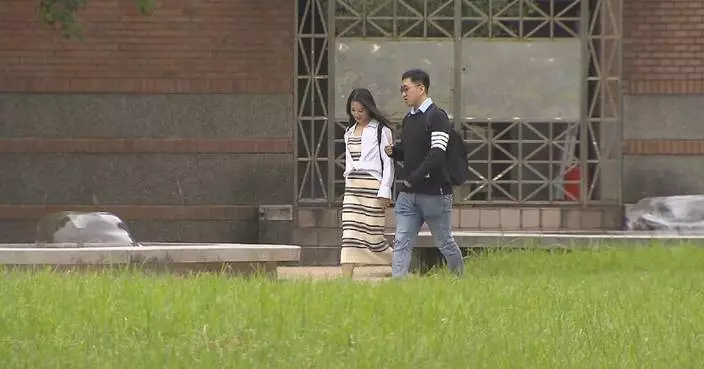Ferries along Yangtze River in central China's Hubei Province that once catered to commuters have been innovated to embrace environmental sustainability while offering luxurious cruise experiences.
Now powered by lithium batteries rather than diesel, the latest generation of "green" cruise vessels offer a smoother, quieter ride along this scenic waterway. With the reduced noise and improved stability, the trip is a lot more comfortable for passengers.
Tourists can enjoy dinner with riverside views, watch light shows on the deck or listen to live music under the stars.
"The mighty Yangtze, the Wuhan Yangtze River Bridge. We're here and thrilled!" said a passenger.
"Night cruising on the Yangtze, the scenery is truly amazing," said another passenger.
Starting at 200 yuan per person, there are different packages offering onboard experience. Recent years have witnessed an increasing number of locals and tourists opening their wallets for the fancy experience.
"Our current ticket prices are the highest among all the night cruise ships in Wuhan. And our passenger capacity per ship is also the largest. In the first quarter of this year, our revenue increased by 30 percent year on year," said Ouyang Ting, general manager of the Yangtze River Cruise Company.
It's not just the festive atmosphere that drives the cruise industry, but also its commitment to sustainability. Over 350 new energy vessels are navigating the Yangtze River in the country.
In 2019, Hubei Province took the lead in developing the first purely electric ship on the Yangtze River. Leveraging Hubei's unique geographical advantages, efforts to promote the development of electric vessels have increased.
"To reduce the cost of inland waterway transportation, we need to adopt new, green technologies. Simply put, this means extending the industrial chain of new energy vehicles, including batteries, motors and electronic controls, to our shipping industry and deeply integrate it with the shipping sector," said Li Mingyong, deputy director of No.712 Research Institute of China State Shipbuilding Corporation Limited (CSSC).

Green cruises sail into sustainable future on Yangtze River
Chinese scientists have recently worked together and rebuilt the face of an ancient Chinese ethnic minority emperor via cutting-edge DNA technology.
Emperor Wu of the Xianbei-led Northern Zhou Dynasty (557-581), also known as Yuwen Yong, was an ambitious leader who died at 36. He belonged to the Xianbei nomadic group, which originated from the Mongolian Plateau.
The tomb of the emperor was discovered in 1993 in a village of the city of Xianyang in northwest China's Shaanxi Province. His skull and bones were discovered during an excavation held in 1994 and 1995 at the site of his tomb.
In late March this year, scientists led by the Shaanxi Provincial Institute of Archaeology and the Institute of Archaeological Science of Fudan University managed to decode key features of the emperor and speculate about his cause of death. The emperor might have died from chronic arsenic poisoning due to long-term use of a pellet, which was believed by ancient people to achieve eternal life.
"First, the skeleton can be used to determine age. Second, in terms of age and gender, some pathological research can also be done to see if he had any fractures or other (diseases)," said Zhang Jianlin, a researcher from the Shaanxi Provincial Institute of Archaeology.
Obtaining high-quality genomic data is crucial for restoring the face. Through DNA paleogenomics techniques and optimized DNA extraction, database building and capture methods, more history was revealed.
"First, we have done the shorter fragments enrichment method, which is a DNA extraction method. In addition, we have developed some more sensitive database building method suitable for ancient samples with short fragments. You can regard it as a method to amplify the genetic signal, the extracted DNA. The third is that we have developed a capture method that is more suitable for this kind of highly degraded ancient samples. So we have optimized and improved our approach from three aspects at the same time," said Wen Shaoqing, an associate professor of the Institute of Archaeological Science of Fudan University.
The reconstructed face showed that Yuwen Yong had black hair, yellow skin and brown eyes, while his appearance was typical for people from East or Northeast Asia.
Wen said that with the help of the DNA technology, the accuracy of facial restoration can reach 90 percent.
"As for the accuracy of (facial restoration), the current situation is that if there is a skull as a basis, its accuracy will be relatively high," said Wen.

Scientists rebuild face of ancient emperor using advanced DNA technology










